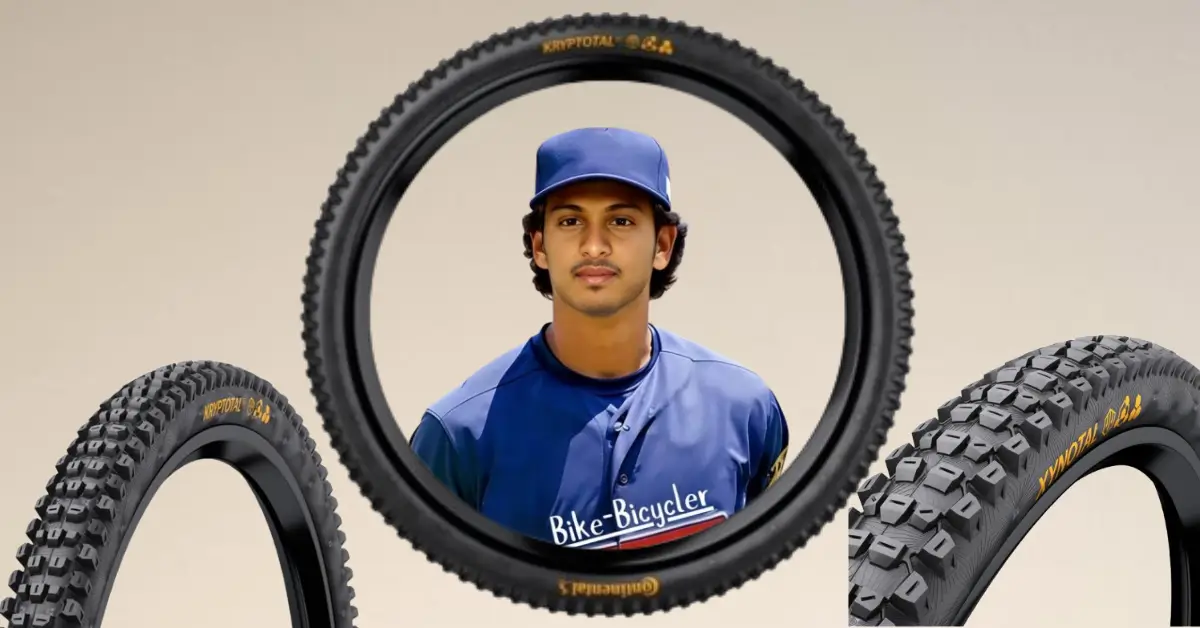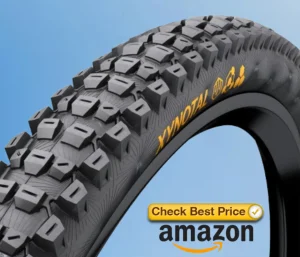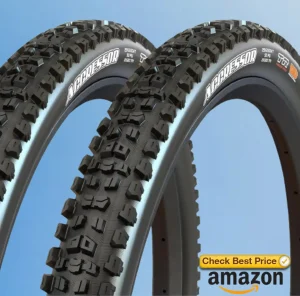Are Continental mountain bike tires really worth the hype? After over a year of real-world testing across Boulder’s rough trails, snowy climbs, and muddy downhills, I’ve got answers. As a mountain biker with hundreds of miles logged on these tires, I’ll share what works, what doesn’t, and who they’re really for.
In this hands-on review, I’ll share my real trail experience and whether they’re worth your ride.
In this hands-on review, I’ll share how they hold up across different terrains—and whether they’re the right choice for your next ride. I wasn’t chasing hype—I just needed tires that could handle wet roots, sharp rocks, and fast switchbacks. After weeks of riding rough mountain trails, I knew I had to share my thoughts.
So if you’re on the fence about giving these a try, stick around. I’ll walk you through what they do well, where they fall short, and whether they’re worth it for your trails too.
My Real Life Experience: Continental mountain bike tires
Riding trails around Boulder means you face it all—dusty summer switchbacks, icy winter climbs, and those sneaky spring downpours that turn dirt into soup. These aren’t just tires I picked up because of brand hype. As an experienced trail rider logging hundreds of miles in variable terrain, I needed something reliable—and Continental delivered. Not perfect, but pretty darn dependable.
Dry Performance—9/10
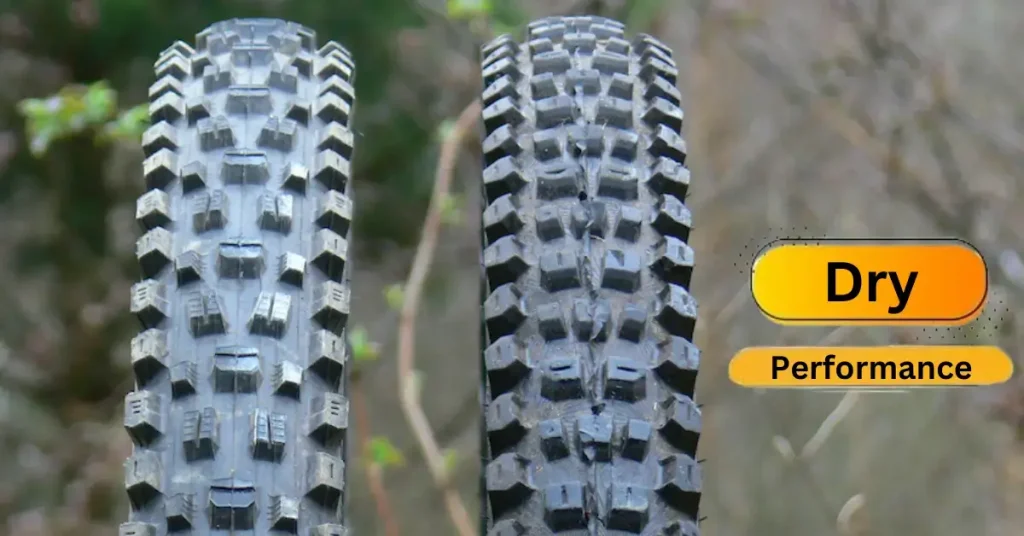
On dry trails, these tires grip like claws. Whether I’m cornering hard or sprinting through loose gravel, they feel stable and controlled. The tread pattern digs in without slowing me down, which is rare. I’ve ridden harder compounds before, but these balance speed and grip really well.
Wet Performance—8/10
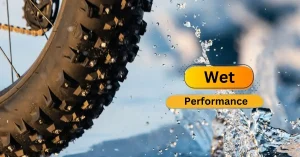
Now, wet trails? That’s where things get interesting. I won’t lie—when the mud gets thick, you need to be sharp with your handling. But the tires don’t quit. They shed mud decently and hold their line over slick roots and wet rocks. I’ve slipped a couple times, but never in a way that made me doubt the tire—it’s just trail life.
Winter Performance—7.5/10
In snow and slush, they’re not magic, but they hold their own. I’ve used them on frozen singletracks, and while they’re not as bitey as studded tires, they’re predictable. That’s what matters most to me—no surprise slides. I drop my tire pressure a bit, and they handle the cold just fine.
Are Continental MTB Tires Supposed to Be Soft?
I’ve seen riders ask, “Are Continental MTB tires supposed to be soft?” The short answer—some models do feel softer than others, especially when the tire pressure is dropped for better grip. This isn’t a flaw. It’s part of how they maintain traction on wet or loose surfaces. They aren’t squishy like road tires, but they flex well enough to keep you planted.
Comfort—8.5/10
These aren’t soft like clouds, but for mountain bike tires with deep tread, they ride smoother than I expected. The shock absorption surprised me—even on rocky descents, the ride felt smooth and stable without harsh jolts. I’ve done three-hour rides without feeling beat up, which says a lot. If you’re coming from stiff or skinny tires, you’ll feel the difference right away.
Noise—6.5/10
On pavement, yeah, they hum. But honestly, if you’re buying these for trails, that shouldn’t be a dealbreaker. The noise isn’t loud enough to annoy—it’s more of a quiet reminder that you’re riding something built for dirt.
Treadwear—9/10
Here’s where I was impressed. After more than a year of weekly riding—often on sharp rocky climbs and gritty switchbacks—the tread still looks surprisingly fresh. That kind of durability speaks to Continental’s engineering quality. It wears evenly, and I haven’t seen any weird cuts or chunking. That durability makes them a smart pick if you’re not swapping tires every season.
But yes
Continental has been around for ages, and you can tell. Their tires feel engineered, not just made. They focus on grip, safety, and longevity, without trying to be flashy. Sure, mounting them can be a pain sometimes (especially tubeless), but once they’re on, they perform across seasons and terrain.
If you’re looking for mountain bike tires that deliver across the board—dry, wet, winter—you could do a lot worse. Continental isn’t hype; it’s heritage with a trail-tested edge.
What I Struggled With (and How It Could Be Better)
- Hard to install. Took more time than I expected.
- I needed strong tire levers and extra tubeless sealant.
- It felt like trying to stretch a tight rubber band over a stubborn lid.
- Even harder if you use tire inserts.
- Some models fit too tight on some rims.
- Easier setup would make a big difference.
What I Liked About This
- Great grip on dirt, rocks, and roots.
- Smooth ride, even on bumpy trails.
- The tread lasts long and wears evenly.
- Feels strong and made for real rides.
- Works well on all kinds of terrain.
- Once set up, they stay solid. No fuss.
My Bittersweet Experience: Continental Mountain Bike Tires Good or Bad
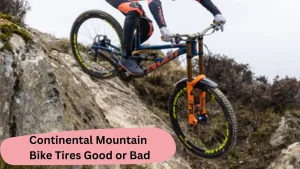
I’ve been riding with Continental mountain bike tires for over a year, and it’s been a mix of high-fives and a few head scratches. They’ve been great out on the trail, but not without their quirks.
Tough Start: Mounting Wasn’t Easy
The first time I tried to mount them, I thought I bought the wrong size.
Problem: The tires felt way too tight, especially for tubeless setup. It took tire levers, extra sealant, and some serious effort.
Solution: Warm the tire a bit before installation and use soapy water to ease it onto the rim. Also, check if your rim and tire combo is a snug match.
Great Grip, But Noisy on Pavement
Off-road, the grip is incredible. But back on the road, the buzz is real.
Problem: They hum on pavement, which can be annoying if you ride mixed terrain.
Solution: Stick to trails when you can, or go for a dual-purpose tire if you ride road often. Continental has options with less aggressive tread for that.
Winter Riding: Better Than Expected
I was nervous about winter, but they held up better than I thought.
Problem: They’re not studded, so on icy patches, they can slide if you’re not careful.
Solution: Drop the tire pressure slightly for better traction, or consider pairing with a winter-specific tire if snow is your main trail.
Solid Build, Long Life
After hundreds of miles, the tread still looks strong. That impressed me.
Problem: None here—this is where Continental shines.
Solution: Just rotate them if you’re doing lots of long rides, and you’ll get even more life out of them.
Thoughts
So, are Continental mountain bike tires good or bad? From my time in Boulder’s rugged terrain, I’d say they’re good—really good. Just know that setup takes a little patience, and the ride is best enjoyed on dirt. For serious trail riders, they’re a worthy pick. Just be ready for a few growing pains at the start.
Alternative Option: Maxxis MTB Tires
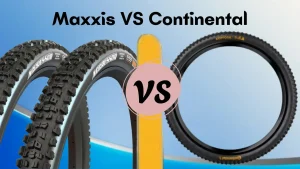
I’ve been riding mountain bikes for years. I’ve tested many brands, and Maxxis is one I keep going back to. It’s trusted by many riders—and for good reason. The tires are fast, strong, and grip well in all kinds of trails.
If you’re thinking beyond Continental, Maxxis is a solid option.
Are Maxxis MTB Tires Good?
I’ve used Maxxis on rocky climbs, muddy trails, and fast downhill runs. They’ve always felt steady and smooth. The grip is strong. The weight is light. And the ride is fun.
Maxxis vs Continental: Easy Comparison
Feature | Maxxis MTB Tires | Continental MTB Tires |
Grip | Great on all trails | Better for steep and wet trails |
Rolling Speed | Fast and smooth | A bit slower, but very stable |
Weight | Lighter choices available | Often heavier, great for rough rides |
Tire Options | Many models for all styles | Focused on Enduro and DH |
Tubeless Setup | Quick and easy | Takes more effort |
Durability | Strong and long-lasting | Built tough for hard use |
Price | Mid-range to high | Mid-range to high |
Summary:
Maxxis shines for riders focused on lightweight speed and quick handling. But if your trails include steep climbs, rocky drops, or slick roots, Continental delivers unmatched grip and lasting durability—even if installation takes more effort.
Is Maxxis a Good Brand of Tire?
I’ve used Maxxis for trail rides, weekend races, and casual climbs. They’re easy to trust. I like how they feel, even when the trail gets tricky.
Maxxis vs Schwalbe: Quick Look
Feature | Maxxis Tires | Schwalbe Tires |
Trail Grip | Strong and steady | Excellent in wet conditions |
Tread Life | Long-lasting | Wears faster in softer versions |
Weight | Balanced for most uses | Lighter in XC options |
Tubeless Use | Simple setup | Can be hard to seal |
Best For | All trail styles | XC and wet trail use |
Summary:
Schwalbe is best for mud and speed. Maxxis wins for all-around use and easy setup.
What Is So Good About Maxxis Tires?
Maxxis makes it easy to find the right tire. They work with pro riders to make models that fit real trails. I’ve used the Assegai, DHR II, and Dissector—and loved all three.
Maxxis vs Michelin: Side-by-Side
Feature | Maxxis Tires | Michelin Tires |
Tire Choices | Big range for all riders | Focused on tough enduro rides |
Ride Feel | Smooth and fun | Can feel stiff on some setups |
Build Quality | Strong and light | Very durable |
Ease of Setup | Simple to install | Needs more time to set up |
Price | Fair for the value | A bit higher for some models |
Summary:
Michelin is strong and grippy. Maxxis is smooth, easy, and great for many ride types.
Pros
- Excellent grip in dry and wet conditions
- Long tread life with even wear
- Smooth, comfortable ride
- Works well year-round
Cons
- Difficult tubeless setup
- Noisy on pavement
My Final Thoughts on Continental Mountain Bike Tires
If you want grip, strength, and control, Continental tires are a solid pick. They work well on steep hills and rough trails. But if you care more about speed and light weight, you may want to try something else. For me, they felt safe and strong—even in mud. Just know they can be hard to install, so take your time and use good tools.
FAQs – Frequently Asked Questions
- Are Continental mountain bike tires a good choice for serious riders?
Absolutely. If you ride rugged trails and prioritize grip, durability, and control over lightweight speed, Continental mountain bike tires are a proven performer. This review is based on over a year of real-world testing in challenging conditions. - Who should buy Continental mountain bike tires?
These tires are best for riders who tackle rocky, muddy, or steep trails. If you value control over speed, Continental tires are a smart pick. - How good are Continental mountain bike tires for beginners?
They’re great for riders who need traction and durability. Just note that setup can be tricky if you’re new to tubeless installs. Learn more in our tubeless tire setup guide to make installation smoother, especially if you’re a beginner. - Do Continental mountain bike tires last long?
Yes, they’re built to last. The tread holds up even after tough rides. You’ll get good value over time with proper care and pressure. - 5. Are Continental MTB tires better than Maxxis or Schwalbe?
It depends on your ride style. Maxxis is lighter and rolls faster, while Continental shines in grip and control. Check the full comparison to decide.
